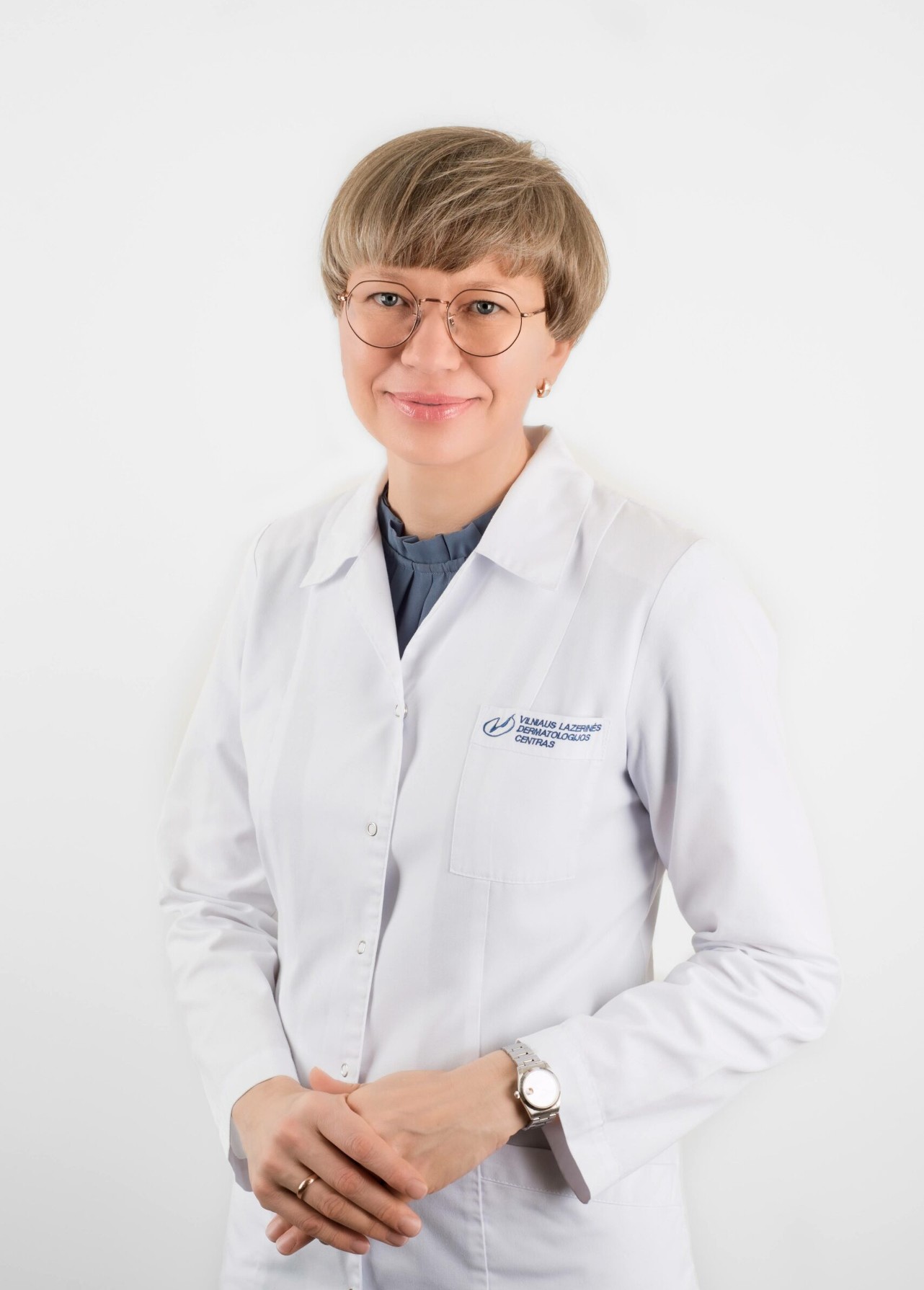All skin harmonics can be broadly divided into 3 main groups:
- benign skin lesions;
- malignant skin lesions;
- precancerous (pre-cancerous) conditions.
Precancerous skin conditions are an intermediate stage between benign and malignant skin conditions. These lesions are characterised by atypia (i.e. certain structural changes) of the cells that make up the lesion. These changes are not yet a sign of cancer, but are not present in healthy cells. These changes are detected by histological examination of the skin lesion, which leads to the diagnosis of a precancerous skin lesion and, after assessment of the patient’s condition, to the appropriate treatment and active monitoring.
Pre-cancerous skin disorders
Pre-cancerous skin disorders are skin lesions which, due to certain factors or the passage of time, may develop into skin cancer. However, it can be very difficult to draw a line between pre-cancerous skin lesions and early malignant skin lesions. Therefore, precancerous lesions must be regularly and carefully monitored. These skin lesions are removed if the dermatologist considers it to be in the best interest of the patient’s health.
Pre-cancerous skin lesions or diseases include: atypical moles, actinic keratosis, skin horn, Bowen’s disease.
Atypical moles are benign skin lesions characterised by asymmetry, irregular contours, a diameter of more than 5 mm and several merging colours. They are often pre-cancerous, as all of the above features are consistent with melanoma. Atypical moles begin to change as a result of prolonged exposure to the sun and are also influenced by genetic predisposition. However, this does not mean that atypical moles will become skin cancer over time.
The ABCDE criteria are an easy way to remember how to check if you have atypical moles:
- A (asymmetry) – asymmetry of the mole’s outline, shape.
- B (borders) – irregular edges of the mole.
- C (colour) – a mole of several merging colours.
- D (diameter) – moles larger than 5 mm.
- E (evolution, growth) – moles grow and otherwise change in appearance.
Actinic keratosis – also called solar or senile keratosis. Most often occurs in areas that receive the most sunlight (e.g. the face). It produces yellowish, yellowish-brown, irregularly shaped, small (up to 2 cm) foci with scabby, scaly skin. The surface is rough. Actinic keratosis is known to be more common in men than in women, as well as in persons suffering from diseases leading to a weakened immune system. The disease lasts for several months or years.
Cornea – also known as senile cornea. It is a pre-cancerous skin condition in which the skin formation resembles a horn cone with a length that exceeds its diameter. A cutaneous horn takes many years to form but has an increased risk of developing into a malignant lesion. The disease is most common in the very elderly.
Bowen’s disease is a pre-cancerous skin disorder in which reddish patches appear on uneven edges and are later replaced by scaly plaques. If the plaque develops into a wound, this is a sign of skin cancer. Bowen’s disease is caused by radiation, arsenic and the human papillomavirus.
Mole test
Modern medicine uses a variety of technologies to effectively diagnose moles. The doctors at the Laser Centre carry out several non-invasive mole examinations: dermascopic examination, video dermascopic examination and FAV examination, a more complex examination where the mole is scanned very deeply.
Skin tumour testing is a simple, painless and quick process. In addition, early diagnosis of skin cancer significantly reduces the risk of the disease spreading.
The doctors at the Laser Centre provide affordable examinations and professional advice on a wide range of skin conditions, such as skin lesions, pre-cancerous skin conditions and how to monitor them, as well as on what skin cancer is and its symptoms and the most effective treatments.






